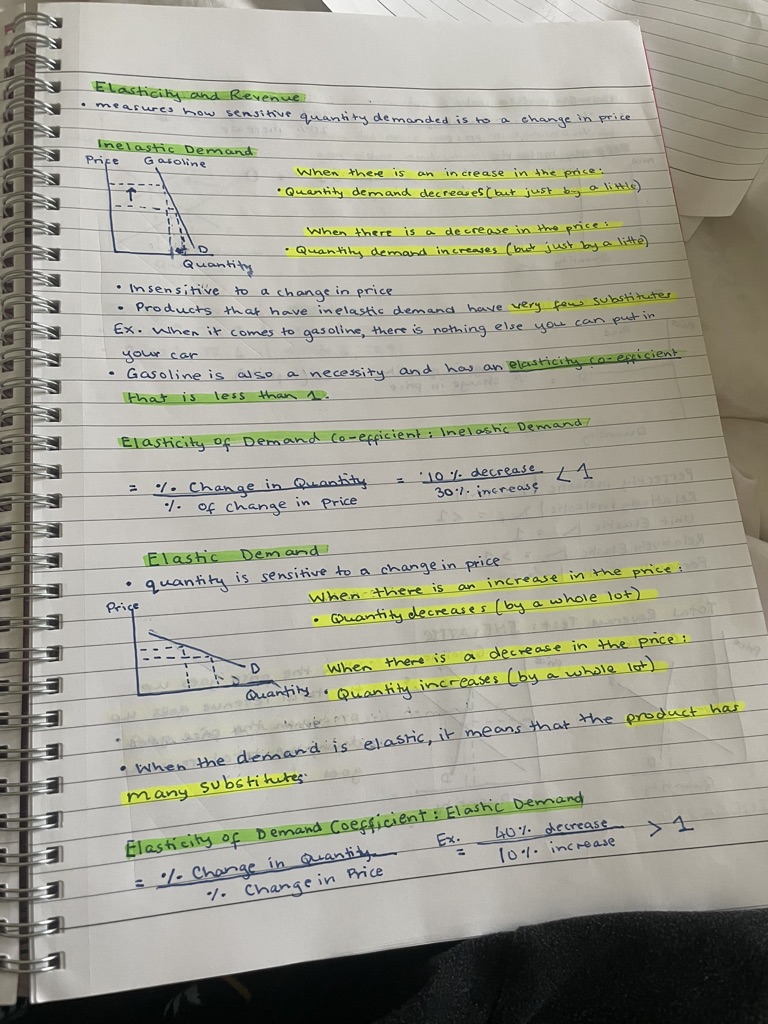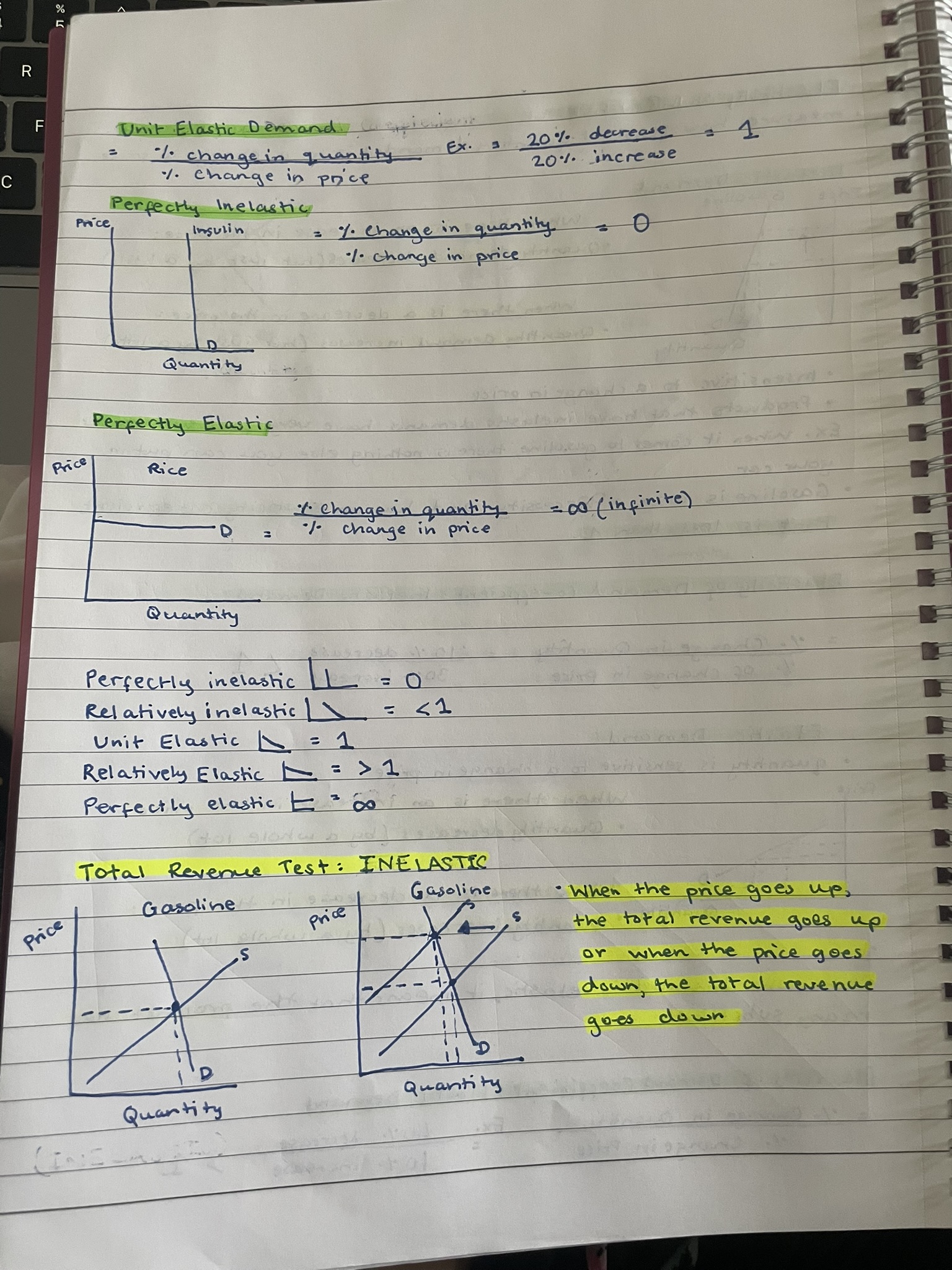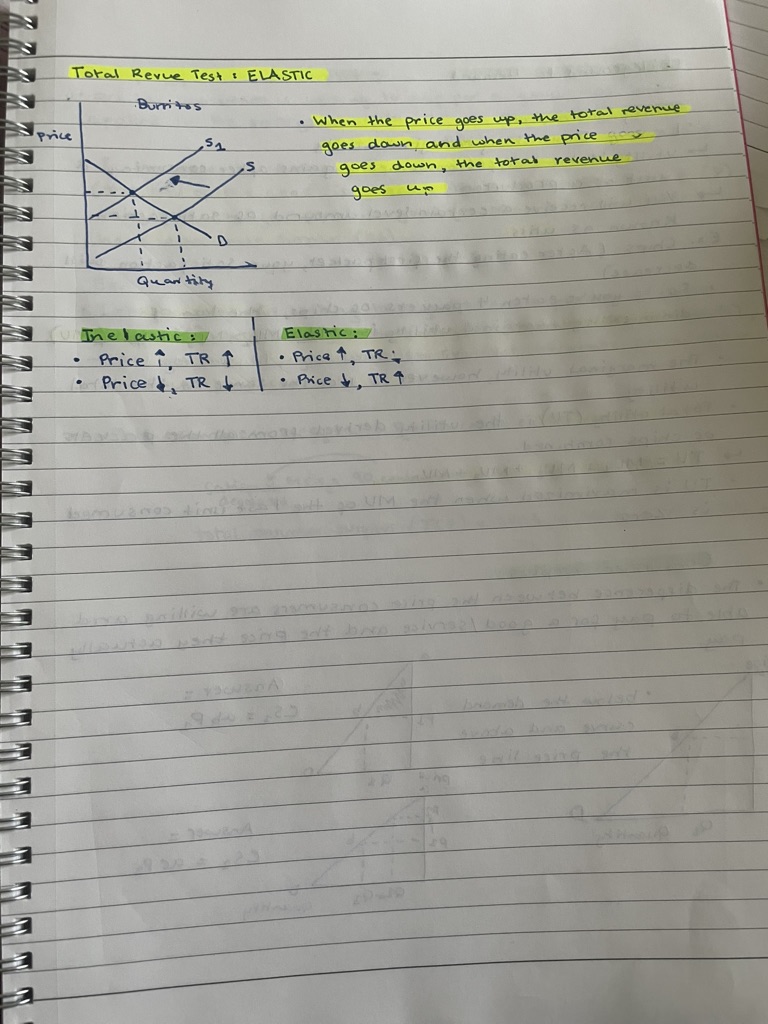ELASTICITY AND REVENUE
Supply and Demand
Demand
Relationship between demand and price
What is the law of demand?
As the price of a good or service decreases, the quantity demanded by consumers generally increases, and vice versa. This inverse relationship illustrates that consumers tend to buy more when prices are lower, adhering to the law of demand.
The law of demand.
The income effect.
The substitution effect.
The demand curve:
The axes.
Individual and market demand curves.
Demand Curve Example: Potatoes (Monthly)
Price (pence per kg) | Kate's Demand (kg) | Simon's Demand (kg) | Total Market Demand (tonnes: 000s) |
|---|---|---|---|
20 | 28 | 16 | 700 |
40 | 15 | 11 | 500 |
60 | 5 | 9 | 350 |
80 | 1 | 7 | 200 |
100 | 0 | 6 | 100 |
Market Demand Curve
The market demand curve is plotted with Price (pence per kg) on the Y-axis and Quantity (tonnes: 000s) on the X-axis.
Point A: Price 20, Quantity 700
Point B: Price 40, Quantity 500
Point C: Price 60, Quantity 350
Point D: Price 80, Quantity 200
Point E: Price 100, Quantity 100
Movements Along and Shifts in the Demand Curve
Change in price: Movement along the demand curve (change in quantity demanded).
Change in any other determinant: Shift in the demand curve (change in demand).
Increase in demand: Rightward shift.
Decrease in demand: Leftward shift.
Increase in Demand
Possible causes:
Tastes shift towards this product.
Rise in price of substitute goods.
Fall in price of complementary goods.
Rise in income.
Expectations of a rise in price.
Demand Functions
Simple demand functions: Qd=a–bP$$Qd = a – bP$$
Where:
Qd = Quantity Demanded
P = Price
Demand Curve Equation Example
Qd=10000–200P$$Qd = 10000 – 200P$$
When P = 5, Qd = 9000
When P = 10, Qd = 8000
When P = 15, Qd = 7000
When P = 20, Qd = 6000
Supply
What is the law of supply? - PROFIT
The law of supply states that, all else being equal, an increase in the price of a good or service will lead to an increase in the quantity supplied, and conversely, a decrease in price will result in a decrease in quantity supplied.
The supply curve:
The axes.
Individual and market supply curves.
Why do supply curves generally slope up?
The upward slope indicates that as prices rise, suppliers are willing to produce and sell more of a good or service in order to increase their profits.
Supply Curve Example: Potatoes (Monthly)
Price of potatoes (pence per kg) | Farmer X's supply (tonnes) | Total Market supply (tonnes: 000s) |
|---|---|---|
20 | 50 | 100 |
40 | 70 | 200 |
60 | 100 | 350 |
80 | 120 | 530 |
100 | 130 | 700 |
Market Supply Curve
The market supply curve is plotted with Price (pence per kg) on the Y-axis and Quantity (tonnes: 000s) on the X-axis.
Point a: Price 20, Quantity 100
Point b: Price 40, Quantity 200
Point c: Price 60, Quantity 350
Point d: Price 80, Quantity 530
Point e: Price 100, Quantity 700
Other Determinants of Supply
Costs of production
Profitability of alternative products (substitutes in supply)
Profitability of goods in joint supply
Nature and other random shocks
Aims of producers
Expectations of producers
Movements Along and Shifts in the Supply Curve
Change in price: Movement along the supply curve (change in quantity supplied).
Change in any other determinant: Shift in the supply curve (change in supply).
Increase in supply: Rightward shift.
Decrease in supply: Leftward shift.
Supply Functions
Simple supply function: Qs=a+bP$$Qs = a + bP$$
Where:
Qs = Quantity Supplied
P = Price
Price and Output Determination
Equilibrium price and output
Response to shortages and surpluses
Shortage (D>S$$D > S$$) => price rises
Surplus (S>D$$S > D$$ > price falls
Significance of ‘equilibrium’
Equilibrium Example: Potatoes (Monthly)
Price of potatoes (pence per kilo) | Total market demand (tonnes: 000s) | Total market supply (tonnes: 000s) |
|---|---|---|
20 | 700 (A) | 100 (a) |
40 | 500 (B) | 200 (b) |
60 | 350 (C) | 350 (c) |
80 | 200 (D) | 530 (d) |
100 | 100 (E) | 700 (e) |
Market Equilibrium
The intersection of market demand and supply curves determines equilibrium.
Practice Example
The demand and supply functions for "AwesomeRay" are given by:
Demand: Qd=1000–2P$$Qd = 1000 – 2P$$
Supply: Qs=200+2P$$Qs = 200 + 2P$$
Determine the output and price at equilibrium:
To find the equilibrium, set Qd equal to Qs:
1000−2P=200+2P$$1000 - 2P = 200 + 2P$$.
Solving for P, we get:
1000−200=2P+2P$$1000 - 200 = 2P + 2P$$
This simplifies to 800=4P$$800 = 4P$$, hence P=200$$P = 200$$.
Substituting P back into either the demand or supply function, we find the equilibrium quantity:
Qd=1000−2(200)=600$$Qd = 1000 - 2(200) = 600$$.
Therefore, the equilibrium price is 200$$200$$ and the equilibrium quantity is 600$$600$$.
Effects of Shifts in the Demand Curve
Movement along the supply curve and the new demand curve.
Effects of Shifts in the Supply Curve
Movement along the demand curve and the new supply curve.
Elasticity and Revenue



